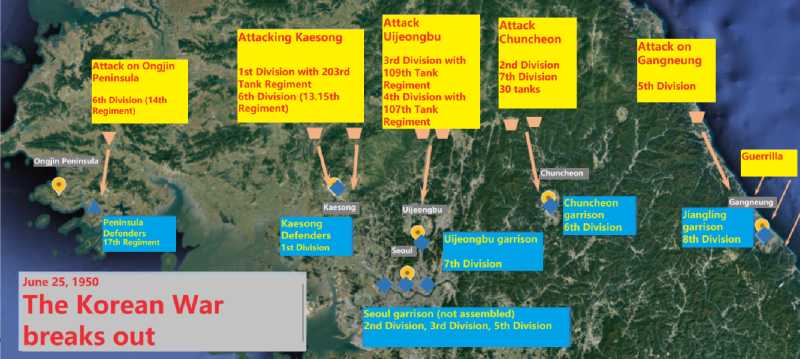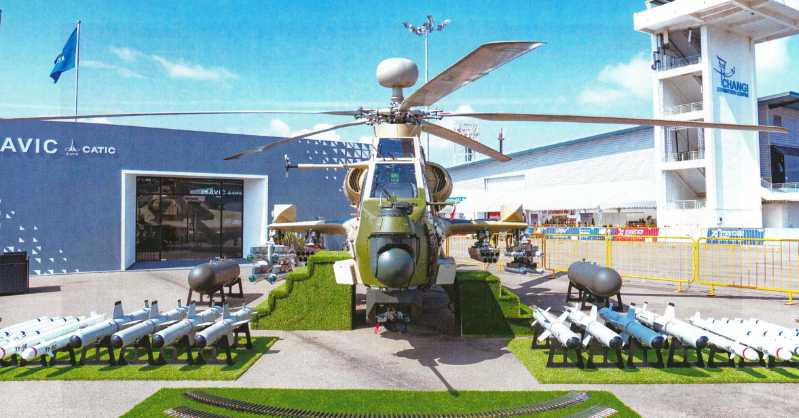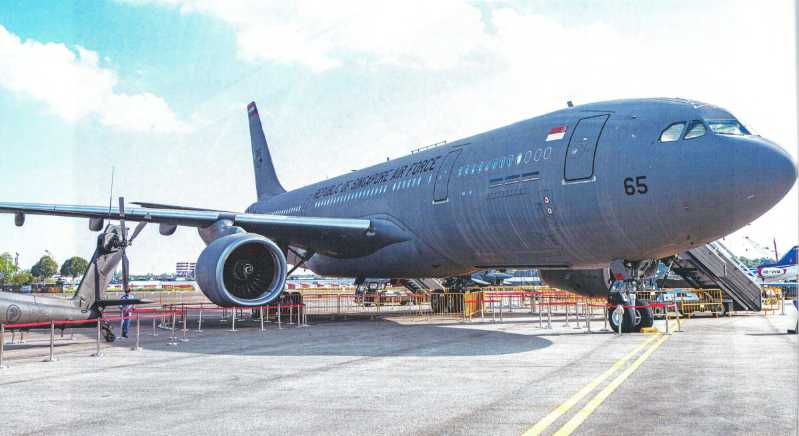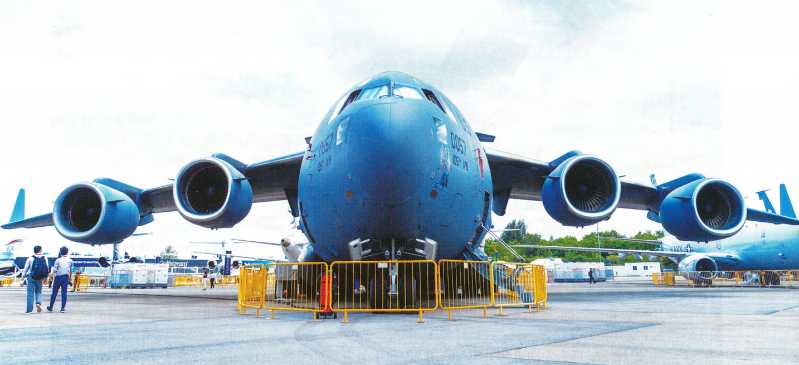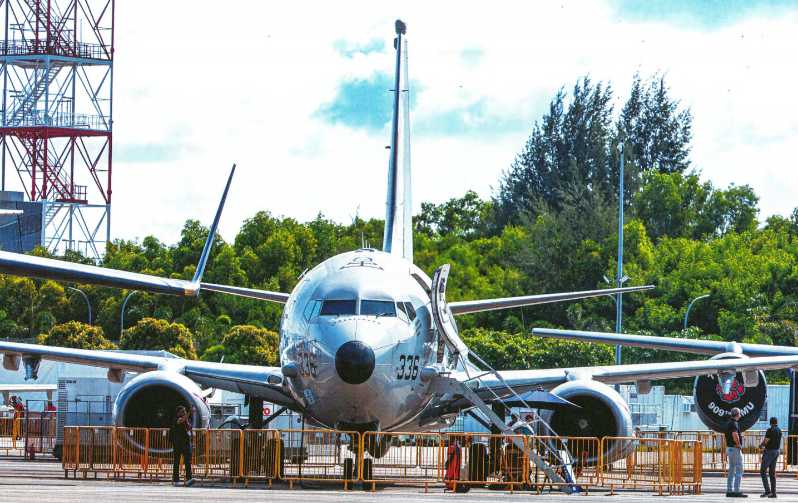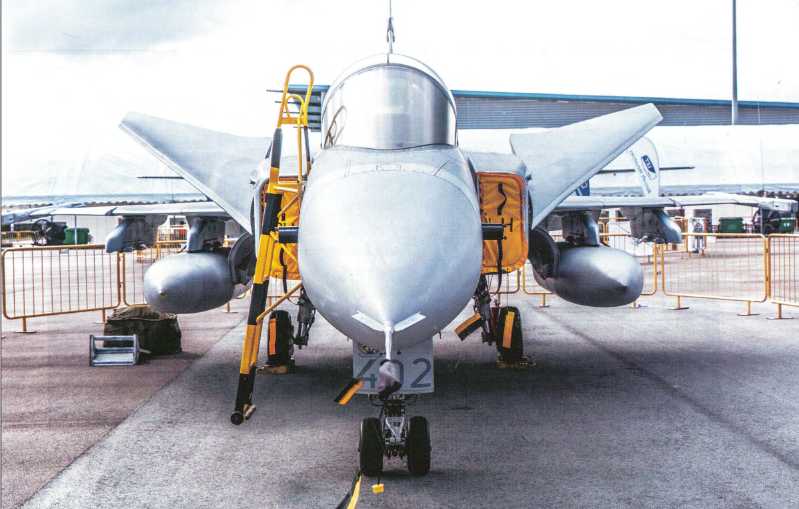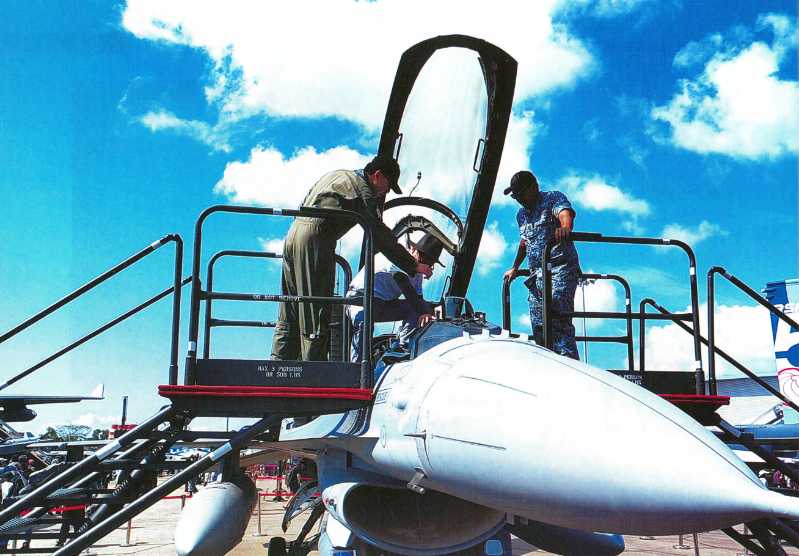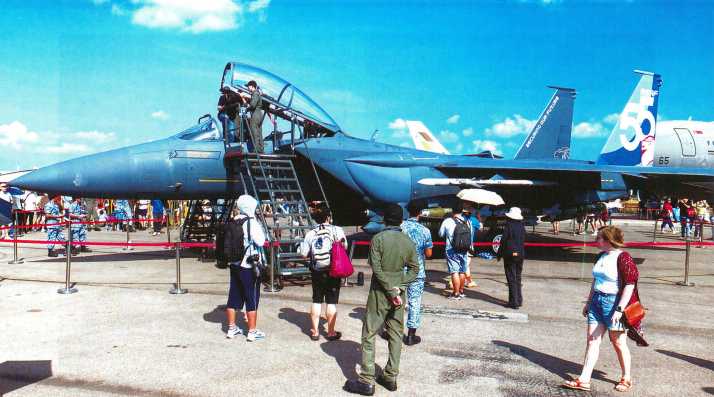June 25, 1950, early morning, Korean Peninsula. It was pouring rain on the 38th parallel, which had been in constant conflict for many years. Huge raindrops kept falling from the sky, but they could not cover up the solemn atmosphere on the 38th parallel at this time. Suddenly, a flash of lightning flashed across, reflecting countless neat figures. The 38th parallel was full of North Korean soldiers ready to go, and dozens of tanks in the front row rumbled. The soldiers half-bent their bodies, staring at the dark front. Some people changed their standing postures nervously from time to time, but they kept holding their rifles tightly. They were waiting for the final attack order.
These soldiers did not know that they were about to start the largest war since World War II, and North Korea was almost destroyed.
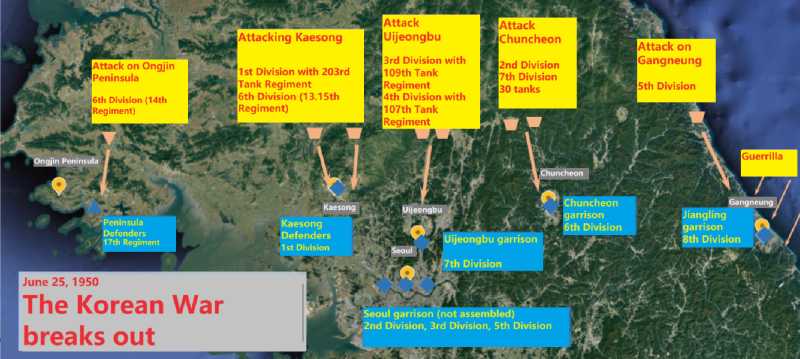
1. 38th parallel
Since the moment the 38th parallel was born, a war was destined to break out on the Korean Peninsula. 1945-1950 was the era when the Cold War just started. At that time, there was almost no place in the world with a stronger smell of gunpowder than the Korean Peninsula: in the north, there was the North Korean government controlled by the Soviet Union; in the south, there was the South Korean government controlled by the United States, and in the middle, there was a completely unreasonable and bizarre border line. At the end of World War II, the Korean Peninsula, like many places in the world, became the target of the two superpowers, the United States and the Soviet Union, to divide their power. In the end, under the almost casual negotiation of the two superpowers, the two sides agreed to use the 38th parallel north as the boundary of their own power.
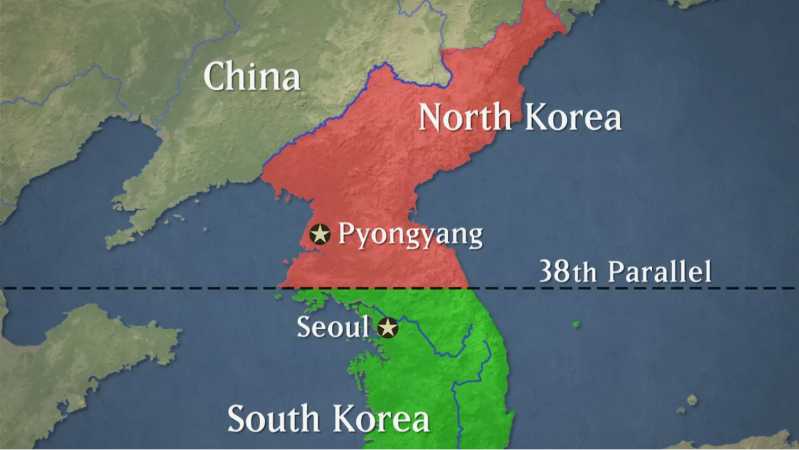
Since the birth of this border line that completely disregards culture, geography, history and folklore and is completely divided by a virtual concept on the map, the conflict between the governments of the North and South of the Korean Peninsula on this line has almost never stopped. Neither Kim Il-sung, the Soviet Union’s agent in North Korea, nor Lee Seung-man, the United States’ agent in South Korea, ever thought of living in seclusion. Since the moment they ascended to the throne, they have been thinking about crossing this imaginary border and realizing the unification of the entire Korean Peninsula. The gunpowder smell between the two forces in the North and the South was so strong that the Soviet Union and the United States, who had been avoiding the outbreak of the Third World War, did not want to stay on the Korean Peninsula. The Soviet and American troops withdrew from the Korean Peninsula at the end of 1948 and mid-1949 respectively. However, the withdrawal of the two major powers not only did not ease the situation on the Korean Peninsula, but also stimulated Kim Il-sung and Lee Seung-man’s will to unify. Both sides began to prepare for the final sprint for the decisive battle on the peninsula. Finally, after a series of changes in the political situation in Asia, in April 1950, Kim Il-sung got permission from Stalin to attack South Korea.
Kim Il-sung quickly completed the final preparations for his unification plan: he bought all the military equipment needed for the attack from the Soviet Union, and then took back the last batch of North Korean soldiers from China. After completing these tasks, the North Korean People’s Army not only surpassed the South Korean army in terms of numbers and heavy firepower, but also had a large number of experienced soldiers, 150 T-34 tanks, and 180 Yak fighters. At this time, the South Korean army was full of recruits who had just completed training, and there was not a single tank. Kim Il-sung’s preparations were complete. At 4 a.m. on June 25, 1950, thunderous artillery sounds rang out on the 38th parallel of the Korean Peninsula. The 110,000 people of the 7 divisions of the Korean People’s Army easily tore apart the weak garrison forces of South Korea on the 38th parallel and began to launch a fierce attack on various military key points south of the 38th parallel. The Korean War officially kicked off.
2. Full-line defeat
The attack launched by North Korea was completely beyond the expectations of the South Koreans. Therefore, at the beginning of the war, the South Korean army was basically unprepared, and most of the South Korean troops were not even fully staffed. As for why the South Korean troops were not fully staffed, this can be seen from the South Korean commander-in-chief Cai Bingde: When North Korea launched the attack, senior officers of the South Korean army frantically called Cai Bingde for instructions, but Cai Bingde’s adjutant told them that Commander Cai had just fallen asleep for less than 2 hours, and it was "absolutely impossible" to wake him up at this time - the diligent adjutant certainly would not tell the officers that Cai Bingde had just returned from a party and slept soundly. As a result, the unfortunate South Korean troops could only face the powerful enemy in a completely blind situation. At 7 o’clock in the morning on the 25th, when Cai Bingde, who was sleeping in a daze, was finally awakened and finally realized that something was wrong, the entire front line of South Korea had begun to be in danger, and the Wengjin Peninsula and Kaesong on the west had been captured by North Korea. The defenders of the Wengjin Peninsula were originally very weak, and the loss was expected. But the capture of the important town of Kaesong in just a few hours was greatly unexpected. It was the 6th Division led by Fang Hushan that captured Kaesong at lightning speed.

The 6th Division was one of the Korean troops that Kim Il-sung wanted back from China. Unlike the troops in the People’s Army that had just completed military training, Fang Hushan and the officers and soldiers of the 6th Division had fought together for many years. As early as when the 6th Division was the Independent 4th Division of the Northeast Field Army of the Chinese People’s Liberation Army, Fang Hushan served as the political commissar of the division. During his precious war experience in China for several years, Fang Hushan, who was not good at military command, gradually grew into an excellent military commander. The division he led also experienced the test of blood and fire and became a powerful team that was good at fighting.
However, the Korean People’s Army did not recognize the powerful combat power of the 6th Division. In the People’s Army’s offensive plan, the 6th Division was not allowed to undertake the main offensive task. Not only was Fang Hushan not equipped with tanks, but he was even required to separate a regiment from the 6th Division to attack the Ongjin Peninsula alone, resulting in Fang Hushan only having 2 regiments to complete the task of attacking Kaesong. The People’s Army did not expect the 6th Division to capture Kaesong at all, but only asked the 6th Division to serve as an assisting force to maintain the integrity of the front line. However, Fang Hushan was not content to just serve as an assist. Fang Hushan had experienced this level of combat countless times in China. Only two regiments? Enough!
Fang Hushan quickly thought of a battle plan: he wanted to "attack the center" of Kaesong. Captain Dalig, a US military adviser stationed in Kaesong, was fortunate to be a witness to Fang Hushan’s surprise attack. In the early morning of the 25th, Dalig was awakened by the rumbling of artillery fire. He rushed to his jeep and rushed to the front line to organize resistance. First, the Korean People’s Army must be stopped at the position outside the city, and then the troops must be organized to counterattack in the safe urban area immediately-Dalige had a defense plan in his mind. However, not long after Dalig’s car entered the city, just as he was about to approach the train station, he suddenly slammed the brakes. Dalig was stunned by the scene in front of him. A 30-car train was parked at the central railway station in Kaesong City. The soldiers on the train were getting off the train in a line. As soon as they got off the train, they raised their weapons and charged around. There were no helmets on the soldiers’ heads! This was the Korean People’s Army! Dalig knew that Kaesong was finished. Before the North Korean soldiers could open fire on him, Dalig swerved, turned around, and ran, crossing the Imjin River in the south.
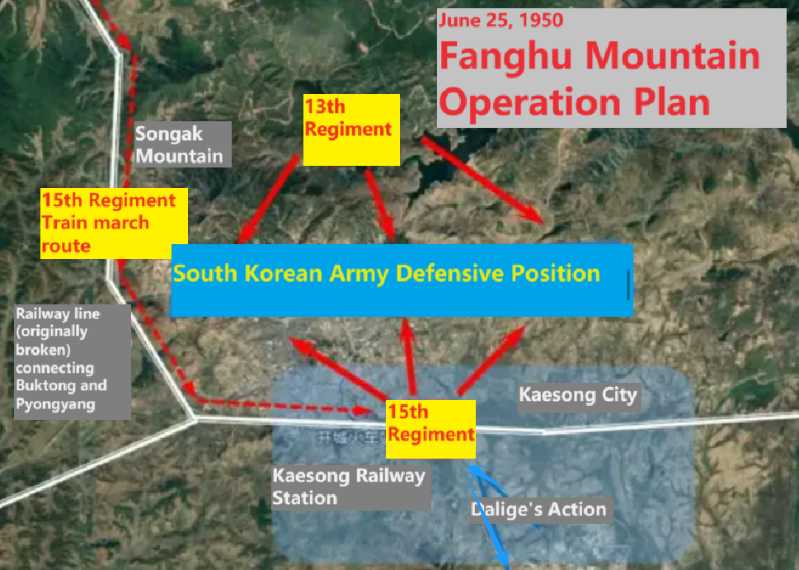
When formulating the battle plan, Fang Hushan decided to bypass the main position of the South Korean army outside Kaesong. With the meager strength of the 6th Division at this time, it was impossible to break through the carefully arranged defense line of South Korea in a short time. If the frontal attack could not be taken, of course, attack from the side - this was a tactic that Fang Hushan had already mastered in the People’s Liberation Army. So, after observing the terrain, Fang Hushan quietly repaired the railway line that had been dismantled on the 38th parallel, and then let the entire 15th Regiment get on the train. Just as the 13th Regiment began to attack the position outside Kaesong head-on, the train loaded with soldiers from the 15th Regiment headed straight for the Kaesong Central Railway Station. The 3,000 soldiers of the 15th Regiment of the 6th Division, sitting on the train, swaggered across the outer defense line of Kaesong and arrived at the defenseless center of Kaesong unimpeded. After the soldiers of the 15th Regiment got off the train, the Kaesong defenders, who were attacked from both sides, collapsed immediately. American military adviser Dalig ran very timely, and the Korean army stationed in Kaesong finally ran out of less than two companies.
3. Escape
Soon after Kaesong was breached, Gangneung on the eastern front of South Korea was also lost under the surprise attack of the 5th Division of the North Korean Army. The 5th Division (164th Division of the People’s Liberation Army), which also returned from China, sent guerrillas to land behind the Korean defense line while attacking Gangneung from the coastline with its main force, successfully dividing the Korean troops stationed in the Gangneung area into countless small pieces, and the Korean army had no choice but to order a retreat. In the Uijeongbu area, where the People’s Army was the main force, the People’s Army relied on its powerful firepower and tank advantages to push forward. The South Korean troops were completely unable to resist and had to retreat step by step. The only comfort for South Korea was in the Chuncheon area. The South Korean 6th Division stationed here successfully blocked the attack of the North Korean People’s Army with the help of the steep terrain, becoming the only South Korean unit to hold its position when the war started.
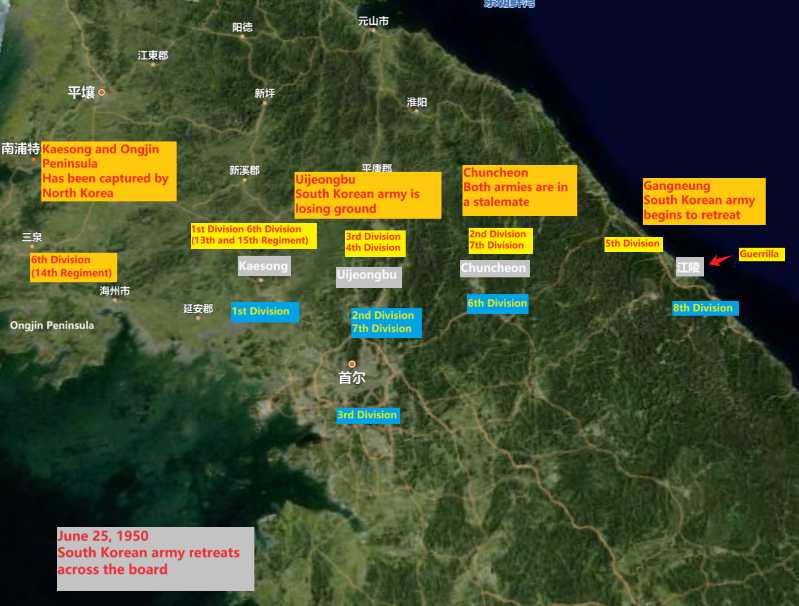
It was not until the afternoon of June 25 that South Korea finally convened a combat meeting and began to discuss strategies to deal with the war. However, South Korean President Syngman Rhee and South Korean Army Commander-in-Chief Cai Bingde had no ideas. The two of them stared at each other and finally sat in the conference room for an afternoon without proposing any meaningful countermeasures. So during the precious time on the day of the war, South Korea’s only action was to constantly summon soldiers from the 2nd, 3rd, and 5th Divisions stationed in Seoul, and then send the assembled 2nd Division to the Uijeongbu front. As for how to deal with North Korea’s full-scale attack, South Korea was completely helpless. However, after all, Syngman Rhee was an old hand who had fought in the political arena for many years. When everyone was in chaos, Syngman Rhee still made the first important decision very decisively. He said to the US Ambassador to South Korea, Mu Qiao: "How about I go first?" Mu Qiao was shocked. It was just the first day of the war, and the reinforcements were still rushing forward. It was still unknown what the situation was like on the front line. You are going to run away now? Aren’t you afraid that the morale of the South Korean army will collapse after you leave? Although Syngman Rhee repeatedly stated that he "was not leaving for his personal safety, he wanted to live so that he could be more responsible to the people", Mu Qiao still firmly suggested that Syngman Rhee stay. Syngman Rhee had to temporarily put aside the idea of escaping and make a decision after seeing the situation.
On June 26, the South Korean commander-in-chief Cai Bingde seemed to have recovered from the shock of the first day and began to issue orders. He asked the South Korean troops in the direction of Uijeongbu to immediately counterattack the North Korean troops. The division commanders could not believe their ears. Even if we do not consider the obvious huge gap in the combat effectiveness of the two armies, just looking at the weapons and equipment, the South Korean army now has no weapons that can deal with the North Korean T-34 tanks. Wouldn’t it be suicide to counterattack now? Cai Bingde insisted that "we cannot passively defend". In order to encourage the division commanders to agree to counterattack, Cai Bingde even lied to his subordinates that "the US military will send 100 bombers to help us launch a full-scale counterattack." So, the hastily deployed South Korean troops rushed to the North Korean army in two directions. One of the counterattack troops was really successful at the beginning. The North Korean 4th Division was actually unprepared and slept peacefully in the camp. They were beaten to a mess by the counterattack of the South Korean army. However, the North Korean troops who woke up soon began to attack angrily. Without a defensive position, the South Korean counterattack troops were almost killed. After hearing the result of the counterattack, Cai Bingde was not vague and immediately ran to report to Lee Seung-man: Uijeongbu was about to fall. Lee Seung-man said he had received it, and then boarded the presidential train for escape. This time he was smart and simply didn’t discuss it with Mu Qiao. In the early morning of the 27th, Lee Seung-man secretly fled Seoul, the capital of South Korea, on a dilapidated "train" without notifying anyone.
Four. The response of the United States
While South Korean President Lee Seung-man hurried to his escape train, US President Truman was nervously studying how to deal with the emergency in North Korea. The outbreak of war on the Korean Peninsula at this time was also completely unexpected by the United States. Before this, the United States’ conception of war was that the United States and the Soviet Union might have a major war in Europe or even the world. However, the local war on the Korean Peninsula has almost never been seriously considered and prepared by the US military. This can be seen from the contingency plan prepared by the United States for the Korean Peninsula. The original plan of the United States was: once a war broke out on the Korean Peninsula, all American advisers on the peninsula would be withdrawn immediately. And then? Then there was nothing. Yes, it’s that simple. This plan was so unreliable that after the war actually broke out on the Korean Peninsula, the Americans immediately realized that they could not withdraw from North Korea so frivolously.
Truman quickly called his staff together to discuss countermeasures. After a period of urgent discussion, although the Americans did not figure out what Stalin’s purpose was, they determined that North Korea’s attack must have been approved by the Soviet Union, and it was likely the first step in Stalin’s series of war plans. The entire US government thought of a terrifying name: Hitler. Small-scale military probing, nibbling away at territory bit by bit, and slowly expanding one’s sphere of influence, isn’t this Hitler before World War II? Therefore, the US government determined that the US military must respond to this, at least not allowing the Soviet Union to occupy the entire North Korea, otherwise it would not only fuel Stalin’s ambitions, but Japan would also be directly threatened by the Soviet Air Force. Truman made clear his initial judgment: "The communists are testing the weak links of our military power. We must respond to their attacks to avoid being involved in a world-wide war in the future."
Because the United States regarded North Korea’s actions as a military test of the United States by the communists throughout Asia, this led to very bad news for China: the United States not only decided to send troops to protect South Korea, but also included Taiwan, which is close at hand, in the protection scope at the same time.
Soon, Truman issued a statement on the situation in North Korea:
1. The United States will support South Korea with its navy and air force and provide all the necessary military supplies to the South Korean army;
2. The US 7th Fleet will enter the Taiwan Strait to prevent any attack from the Chinese mainland on Taiwan, or Taiwan on the mainland.
So, the United States began to deal with this war that was completely unexpected, and completely forgot the statement it had just issued half a year ago that "Taiwan and South Korea are no longer in the US defense circle", and decided to send US troops to help South Korea. The decision was so hasty that Ridgway, who later became the commander-in-chief of the US military in North Korea, could not help but complain: "Before the Korean War, all our military plans envisioned a war that would sweep the world. In such an environment, it would be foolish to defend a remote and undefended peninsula."
When the US statement reached China, Chairman Mao was furious: "It’s fine that you Americans don’t keep your word, but now it’s the North Koreans who are at war, why do you care about my Taiwan?" In addition to being angry, Chairman Mao was more helpless. After all, when Kim Il-sung informed Chairman Mao of North Korea’s offensive plan, Chairman Mao had already anticipated that as long as North Korea launched an offensive, the United States would definitely not stand idly by, and once the Americans joined the political struggle in Asia, it would be only a matter of time before they intervened in Taiwan’s affairs. Everything that was expected happened, and it was no surprise that the US aircraft carrier entered the Taiwan Strait.
V. Total destruction
On the morning of the 27th, the announcement that the US Navy and Air Force would send reinforcements reached the Korean Peninsula, but the reinforcements would not be as fast as the telegram after all, and it would take time to prepare for the army to be dispatched. At this time, the South Korean army on the Uijeongbu side had already retreated completely, and the North Korean troops were approaching Seoul step by step. The commander-in-chief of the South Korean army, Cai Bingde, was now thinking about how to escape from Seoul as soon as possible.
Cai Bingde said to his subordinates: "It’s not that I want to escape personally, but I have to survive so that I can be more responsible for the army." This sentence seems to sound a little familiar.
Cai Bingde, who was completely helpless in the face of the North Korean attack, was completely unambiguous when it came to running away. He not only arranged the retreat plan of the entire Army Headquarters, but also instructed the engineers to bury explosives on the Han River Bridge immediately, and as long as he Cai Bingde ran over, he would be ready to blow up the bridge at any time.
Han River Bridge is the only large bridge on the Han River south of Seoul, and it is also the only passage from Seoul to the south. As long as the bridge is blown up, North Korea’s large army will be blocked on the north bank of the Han River and will not catch up in the short term.
After hearing Cai Bingde’s plan to blow up the bridge, every American military adviser who was still holding on in Seoul was stunned by his invincible operation: all the main forces of South Korea were still desperately blocking around Seoul. If the bridge was blown up, North Korea would not be able to catch up, but wouldn’t South Korea’s own troops be finished?
Almost all the division commanders and American military advisers ran frantically to Tsai Bingde and asked him not to blow up the bridge, or at least to wait until the main force of the South Korean army withdrew to the south bank of the Han River.
Cai Bingde’s answer was, "Yeah, yeah, okay, that’s it, I’ll go first", and then he ran to the south bank of the Han River in a jeep.
Cai Bingde did wait for a while, because the several tons of gold and silver stored in the Bank of Korea had to be transported away anyway.
At 2 a.m. on the 28th, the Han River Bridge was still bustling with people. Almost all the people in Seoul could only flee from this only road. Although it was midnight, the bridge was still packed with people.
Suddenly, an orange flash illuminated the entire rainy night. Forty or fifty cars flew into the air, mixed with countless limbs and arms, and a real bloody storm fell beside the bridge. The South Korean army detonated the explosives on the Han River Bridge. The people and troops who were eager to flee on the bridge were blown up into the sky along with the Han River Bridge.
No one knows how many South Korean soldiers and civilians were killed in this explosion. Some say hundreds, some say thousands. In fact, this number is not the most important, because the most important thing is that the explosion of the Han River Bridge announced the death sentence of all the main forces of the South Korean army.
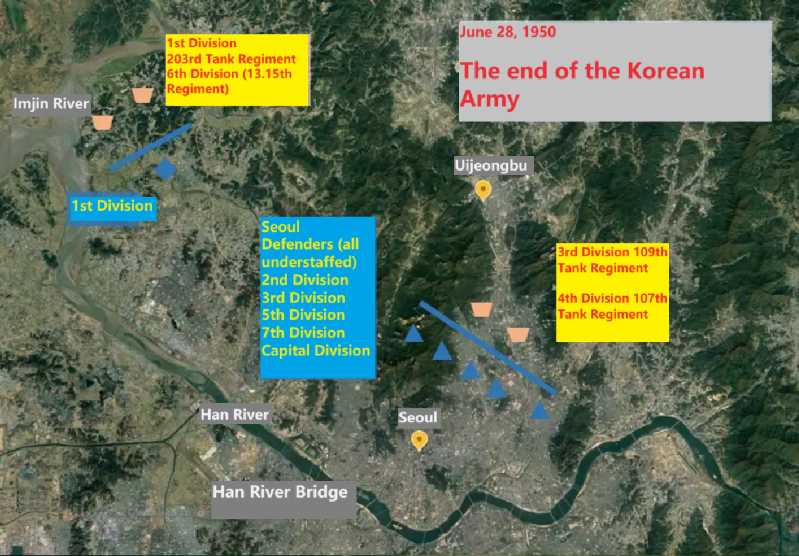
In fact, under the desperate resistance of the frontline soldiers of the South Korean army, the blocking effect of the South Korean army was much better than expected. Until the early morning of the 28th, the North Korean army did not encircle Seoul. Only the 3rd and 4th divisions approached the suburbs of Seoul. However, because of the fear that its main force would be too prominent and fall into encirclement, North Korea did not even intend to attack Seoul with all its strength at this time, and there was no material to prove that North Korea had the idea of seizing the Han River Bridge at this time. In other words, at least on the 28th, the Han River Bridge was not in danger of being lost. As long as the Han River Bridge was retained and a small number of troops were arranged to block in Seoul, the main force of the South Korean army could almost certainly retreat safely to the south bank of the Han River. However, the premature explosion of the Han River Bridge wiped out all the efforts of the South Korean army. The explosion of the Han River Bridge means that the retreat of all South Korean troops has been cut off. The South Koreans buried their own troops with their own hands.
On the morning of the 28th, after learning of this devastating news, the South Korean army, which had been desperately blocking the enemy the moment before, collapsed in an instant. All organized resistance in South Korea disappeared, and all South Korean soldiers began to flee desperately.
At the beginning of the war, there were 98,000 South Korean troops. After the Han River Bridge was blown up, only less than 22,000 people fled back to the south bank of the Han River. The real hell of the South Korean army officially began from this moment.
Author’s comments
1. North Korea took the lead in launching an attack. This was a war of unification. This war was destined to break out since the Western countries used the 38th line to divide North Korea into two halves. Both sides wanted to unify, and it was impossible to maintain a balance forever. Once the power of the two sides was unbalanced, war would inevitably break out.
2. North Korea took advantage of the surprise attack, but did not achieve any breakthrough results, because their tactics were really mediocre. They just pushed forward in a straight line and relied entirely on the combat power of the T-34 to make a central breakthrough. As a result, the overall advancement was very slow. After three days, they had not even surrounded Seoul, which was so close.
3. However, this offensive plan was not actually made by North Korea itself, but by the Soviet Union. Kim Il-sung originally made a set of offensive plans. Stalin saw that he did not consider infantry and artillery coordination, logistics support, and the coordination of various divisions. It was completely random. Stalin threw Kim Il-sung’s plan into the trash can and said, "Don’t mess around. I’ll let the Soviet General Staff make one for you."
4. However, Stalin did not want others to "misunderstand" that the Soviet Union participated in the attack on North Korea, so he issued an order requiring all Soviet military advisers not to follow the troops to the south of the 38th parallel. This order was an important reason for the poor performance of the People’s Army in the early days of the war. There were Soviet advisers at almost every level of the Korean People’s Army. It is not an exaggeration to say that Soviet advisers were the backbone of the People’s Army.
5. Another important reason why North Korea did not progress smoothly was that they did not understand the combat effectiveness of their own troops at all: the North Korean army believed that its main force was the 3rd and 4th divisions, and assigned a large number of tanks to these two divisions, responsible for the main attack and breakthrough in the center. However, the combat effectiveness of the 5th, 6th, and 7th divisions reorganized by the People’s Liberation Army was seriously underestimated. When the war started, they were placed on the flanks to maintain the front line. The 5th and 6th divisions did not have a single tank, and even split the 6th division into two parts.
6. At the beginning of the battle, the 5th and 6th divisions defeated the enemy in front of them in a very short time, but due to the lack of tanks and heavy firepower support, they failed to further expand the results of the battle; even more outrageous was the direction of Chuncheon. The 7th Division quickly broke through the enemy in front of them and was about to surround the entire Korean army in Chuncheon, but was called back by the commander to continue the frontal attack with the 2nd Division. Not only did they suffer heavy casualties, but they also failed to capture Chuncheon in the end.
7. The 3rd and 4th divisions, which North Korea had high hopes for, had a total of 28,000 people. Facing the Uijeongbu defenders of less than 7,000 people at the beginning, it took them two days to completely break through the Korean defense line, and they also made a low-level mistake due to carelessness and were successfully counterattacked by the Korean army overnight.
After reaching the outskirts of Seoul, the commanders of the 3rd and 4th divisions, fearing that their flanks would be exposed, did not seize the opportunity of the unstable defense line of the South Korean army to launch a general attack on Seoul. If the South Korean army had not collapsed due to the bombing of the bridge, this would undoubtedly be a great opportunity for the South Korean army to reinforce the defense line of Seoul.
In short, whether from the perspective of command or combat effectiveness, the 3rd and 4th divisions, which the North Korean army considered to be the main force, performed mediocrely and did not show the combat effectiveness that the ace troops should have. If North Korea could recognize the powerful combat effectiveness of the 5th, 6th, and 7th divisions, that is, the Chinese People’s Liberation Army, from the beginning, and assigned tanks and heavy artillery to them to take the main attack mission, the Korean War could have completely turned into another result.
8. On the other hand, I won’t talk about the senior commanders on the South Korean side. At least the North Korean army has the Soviets to back it up. The South Korean command is simply terrible. Here I will specifically discuss the combat effectiveness of the South Korean army.
After studying the situation on the front line three days after the war started, I found that the South Korean army was not as vulnerable as originally imagined at the beginning of the war. At the beginning of the war, the conditions faced by the front-line troops of South Korea were extremely cruel: no command, lack of psychological preparation, far weaker troops than the opponent, heavy equipment was completely not of the same level, and lacked effective anti-tank weapons. To be honest, it looked like it was about to end. However, under such circumstances, the South Korean army only really lost the Kaesong and Gangneung areas at the beginning, and it is understandable that they lost to the People’s Liberation Army. There was no total collapse in other places, and they had been resisting tenaciously. Even if they retreated, they were able to withdraw a large part.
9. In the records of the South Korean war history, the South Korean soldiers were very brave in the early days of the war, and there were many scenes of them carrying explosive packs and perishing together with tanks. Judging from the results of the battle, I think these records are very likely to be true, otherwise it is difficult to explain why the North Korean army, which had the advantage of surprise attack, made such slow progress. However, no matter how brave the front-line soldiers were, they could not withstand such an incredible operation of being cut off by their superiors. After the bridge was blown up, the fighting spirit of the South Korean army finally collapsed completely.
10. To sum up, in the past few days since the start of the war, the North and the South have fully demonstrated what "equally matched opponents" are:
North Korea had the advantage of a surprise attack, Seoul was very close to the 38th parallel, and it had three PLA divisions, 150 T34 tanks, and so many other advantages. Then it split up its hand of good cards and played them one by one.
The South Korean army would fight better if they had a dog as commander.
Irresponsible imagination, if the North Korean army is replaced by the Chinese People’s Liberation Army in this battle, it can be expected that the South Korean army will be completely wiped out within 3 days, and Busan will be taken within a week, so that the US military can’t find a place to land, and there will be no South Korea in ten days.
11. The Soviet Union’s performance is disappointing as always. My evaluation of the Russians is that they like to take advantage of small things, and they don’t care about their lives when they take advantage of small things, but they are timid and hesitant when they really do big things. They have already decided to launch an attack, but they actually ordered Soviet military advisers not to follow the troops. They are unwilling to take even such a small risk. Does it mean that if Soviet military advisers don’t follow the troops, others will think that the Soviet Union has nothing to do with this war? Do they think everyone is a fool? After launching a war, they don’t think about how to win with all their strength, but think about how to reconcile with the other side after the war. This has been the case since the Soviet Union and Russia today. In fact, whenever there is a possibility of conflict with the United States, the Soviets have chosen to retreat. Until the recent Russia-Ukraine war, the decision-making of the Russians was as bad as always. After launching the war, they didn’t think about how to win the war with all their strength, but were timid and thought about how to ease relations with the West if they fought too hard. The better the fight, the smoother the ceasefire. The worse the fight, the less likely it is to ceasefire. No one will ceasefire with a weak chicken.
12. The United States responded very quickly and decisively. In the Korean War, it established the image of the responsible boss of the capitalist world, which was in sharp contrast to the Soviet Union.


